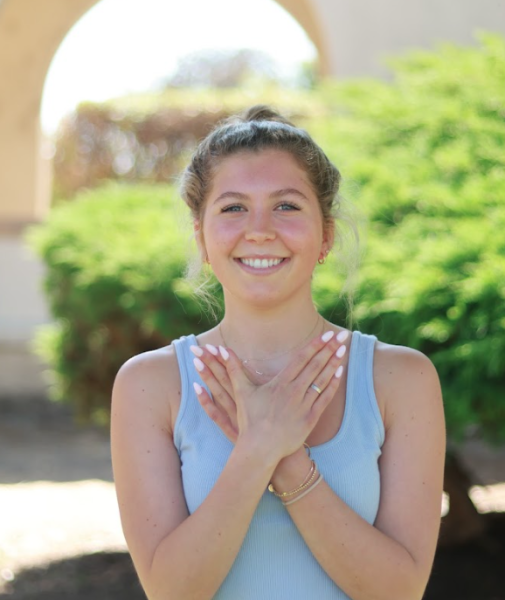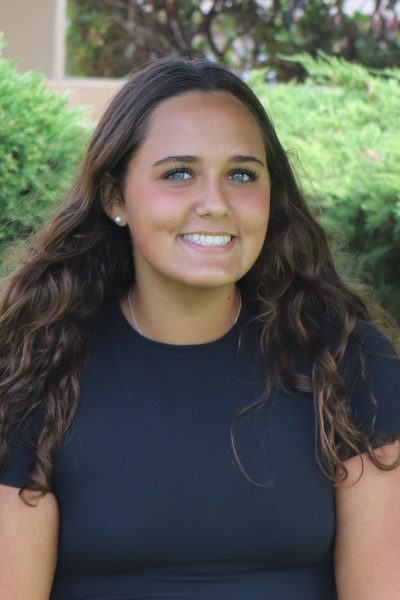We all have been in PE since before we could even read, from doing a water balloon toss in elementary school to sprinting a mile to hold onto your A in high school.
Physical Education class provides valuable motor skills and strong physical fitness. Paly emphasizes the value of physical activity, whether students are encouraged to participate in sports or take a PE course as an alternative to those sports. PE has undeniable benefits, but also has its share of both fans and haters here at Paly.
Our school is well known for our athletic excellence, which can be attributed to both our sports programs and our PE instructors. The teachers give students experience in several sports, including softball, soccer, basketball, badminton, pickleball, swimming, and more during their time in PE.
Paly PE is well known to all students, with different units focusing on different sports, as well as including conditioning and tests like the Fitness Test, which measures skills like one’s mile time and push-up ability.
But Paly athletes don’t necessarily need to spend two years in the classic PE class. When a Paly student reaches sophomore year, they have more flexibility of options for PE credit. There are four possible choices which include; athletic conditioning or weight training, yoga, dance, and the standard PE curriculum.
Sophomore Ella Segev is one of the many students that opted for an alternative PE course.
“Running wasn’t really my thing and I wanted to avoid that,” Segev said. “Yoga is a great way for me to be physically active and get the requirements done, and it doesn’t involve running.”
The course is designed to introduce students to basic postures, breathing techniques, and relaxation methods of yoga. Students will experience the benefits of stretching, moving, and breathing freely. The ultimate goal in mind is for students to get more out of day-to-day life while still aiming to promote physical and mental health.
The main flaw to note about alternative PE courses is that free periods, or “preps,” are not offered to the students enrolled in these classes. Free periods are granted to student-athletes who play Paly sports when their sport is in season.
This is an incentive to give athletes an extra period to focus on school while their time after is filled with athletic practice. Segev notes that it can be challenging if a student athlete opts to choose an alternative PE option, since there is no prep available.
“If I could have a prep for my PE class period, then I would have more time to get homework done, and I could prepare for tests,” Segev said.
Sophomore Matteo Saffer takes athletic conditioning as an alternative to PE during zero period before school. Athletic conditioning is designed for athletes who want to maintain their body conditioning even when not in season. It is highly encouraged for two-or-more-sport athletes to enroll in athletic conditioning.
Saffer receives a prep from taking zero period but notes that the early start sometimes cuts into his sleep, which is also crucial for athletes.
“I get to focus on weightlifting instead of doing multiple sports, which is one difference,” Saffer said. “There is also a lot of flexibility in what you do, so I can do a different lifting routine than other people.”
Paly offers a large selection of sports for students to participate in, all of which grant athletes a prep while in season. However, there are some sports that are not offered through Paly. In order to get a prep for a sport not offered through Paly, students have to apply for an “independent study.”
The process to apply for an independent study is available to students who have completed their freshman year of physical education at Paly. These athletes would still need to take a full year of PE before receiving their prep because independent study only applies to sophomores.
After that year is fulfilled, there are many criteria an athlete still must meet to earn a prep period. The student must have 3+ years of prior experience in the activity, and they must do year-round training, five to six days per week, totaling to 15 hours weekly. Independent study PE applications are available upon request from the PE instruction advisor during the first two weeks of the school year. It can, however, be challenging to get a prep through this program.
Junior Tyler Kramer has been rock climbing for many years. Rock climbing is not a sport that is offered through Paly. Kramer is one of the many student athletes at Paly that went through the process of applying for an independent study.
“It was not difficult [to apply for an independent study] because I have a coach and I do more than enough hours,” Kramer said. “I’ve been doing it my whole life so it wasn’t really a big thing for me, but for other people I know it was. I had to do quarterly updates with my coach and have them sign off on them. But apart from that, I was free from PE.”
At Paly, the PE curriculum consists of many things; weightlifting, running and agility, swimming, and involvement in various sports. However, one thing that many argue should be added is nutrition. Nutrition is arguably one of the most important things that teens can be taught, as it can influence their lifestyle throughout their whole life. According to AboutKidsHealth, “teens need extra nutrients to support bone growth, hormonal changes and organ and tissue development, including the brain.”
Sophomore Romy Kirby is starting her second year on the varsity swim team and believes that nutrition is vital for teens.
“I think this generation specifically eats a lot of bad food and it’s really affecting our bodies but you won’t see it until later in life,” Kirby said, “and if you don’t learn about it at school, a lot of parents won’t talk about it and you won’t learn about it.”
One of the core pieces of the physical education curriculum at Paly is running and agility. Students are tested on their running abilities tri-annually by participating in fitness tests worth 15% of your semester grade. Fitness tests consist of eight different tests; for many students, the worst are the 400 meter run, 800 meter run, and the mile. The standard for students to earn full credit on the mile run is 8:10 for girls and 7:10 for boys. This standardized time might be doable for some students, but for others, these standards can be very challenging. Paly PE teacher Jason Fung believes that the standards provide a good comparison point for health for students.
“I think that it [the PE standards] just sets a parameter of what kids should be at, not saying that it is the end-all-be-all,” Fung said. “I think that it’s an obtainable goal of some sort that gives kids an idea of where their fitness level is.”
Other students argue that the standards for fitness tests is an unfair measure of what athleticism looks like, including junior Jorell Clark. Clark plays varsity basketball and ran track and field for Paly.
“I think that it might be a bit challenging for non athletic people, especially since it’s not something that they’re born with,” Clark said. “It might be hard for them to do their best, and the athletic people do have an advantage.”
Likewise, despite many arguing for the benefits of Paly PE, many students believe PE is unnecessary.
Sophomore Reyes Aronson believes that PE is not important and takes away from her time to do other things.
“We shouldn’t have to take PE, and we could have time for other classes,” Aronson said. “I think that taking it freshman year is fine, but after freshman year it’s kind of irrelevant.”
Junior Sam Ewen has finished his required two years of physical education at Paly and also believes that PE is necessary.
“I think it’s very unimportant,” Ewen said. “I think if every single kid at Paly has a prep, then our school would thrive.
Aronson observes that Paly classes become more challenging during sophomore year and many students would benefit from having a free period to catch up with their studies.
“I don’t think it’s important after freshman year,” Aronson said. “I feel like sophomore year becomes more challenging, and I don’t think we should have to take PE.”
An anonymous senior provides an alternative perspective.
“I think if you have always been active since you were little, PE may not seem important to you,” she said. “But for some people, they haven’t gotten the opportunity to play sports or build healthy habits. If PE can be a fun way to try new activities out with friends, it might be a really good way to help support an active and healthy lifestyle.”
The controversy about whether PE should be a required class at Paly for freshmen and sophomores is a topic many students are passionate about. Some may argue that PE is beneficial for students because it allows them to be physically active and take a break from the rigorous classes offered at Paly.
“I think [PE is] something that all the kids need, I would even say for four years of high school,” Fung said.
Fung believes that putting in the work will get you results.
“It depends on how you go about your PE class,” Fung said. “If you take PE seriously and do all of the Vikings up to the standards, you’ll get some sort of benefit out of it.”
The anonymous senior also sees many benefits.
“Even if PE isn’t your thing, it’s still fun to just be outdoors with your friends and to take a break from academic school,” she said.
Despite the diverse student opinions on PE, it is undeniable that PE gives students many opportunities to build healthy habits that will last a lifetime.




